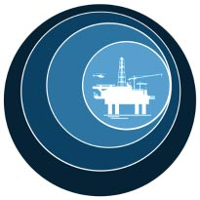Accumulation of Gas in Living Quarters Results in Explosion, Fire, and Injuries
Effective Date: 11/26/1997
 | Minerals Management Service Gulf of Mexico OCS Region |
November 26, 1997
CONTACT: Chuck Schoennagel, Jr.
(504) 736-2923
Accumulation of Gas in Living Quarters
Results in Explosion, Fire, and Injuries
Three personnel were severely burned while a well was being unloaded through the low-pressure vent scrubber (LPVS) to the platform vent system. After they had rerouted the well flow from the test separator to the LPVS for unloading, the three workers proceeded to the living quarters. While they were in the living quarters the 25% Lower Explosive Limit (LEL) gas alarm sounded and, within seconds, an explosion and fire occurred. Emergency shutdown (ESD) stations were activated to shut in the platform as the employees escaped to the lower decks. The living quarters, heliport, and all communication equipment were destroyed. The employees were stranded on the platform from late evening until a crew-change helicopter arrived the next morning.
It should be noted that the 25% LEL gas alarm had sounded during prior unloadings of the well. In addition, the automatic liquid dump valve was out of service, the manual liquid dump valve was open, and the pressure relief line was blind flanged from a previous PSE rupture on the LPVS. With the manual liquid dump valve open, gas blowby to the sump was very probable. Deck drain piping was tied into the liquid dump line piping from the LPVS before entering the sump. A P-trap was the only protection for preventing gas migration to deck drain piping. The living quarters building was positioned over deck drains with many openings in the building through which gas could migrate.
Therefore, from this information, the following are recommended:
1. When gas sensor heads detect a 25% LEL in the living quarters, lessees and operators should
consider shutting down operations until they establish the reason for the alarm by locating and eliminating the source of the gas or by identifying and correcting any problem with the gas detection system.
2. Lessees and operators should repair malfunctioning equipment in lieu of using alternative methods such as opening a manual liquid dump valve when the automatic liquid dump valve fails or blind flanging off a pressure relief line when a PSE ruptures.
3. Lessees and operators should review platform piping to ensure that deck drains have an adequate trap mechanism to prevent gases from migrating through them, that deck drains are not piped to a pressure line before entering a sump tank, and that piping for produced water does not tie into the piping for the wastewater from the living quarters.
4. Lessees and operators should review their gas detection system to ensure that the locations of
gas detector sensing heads provide adequate protection and that all heads are tested.
5. Lessees and operators should review flare boom lines to ensure that they are designed of proper length, height, and oriented in the proper position according to prevailing winds to minimize the migration of gas back to the living quarters.
6. Lessees and operators should consider equipping manned platforms with some type of emergency position-indicating radio beacon.






